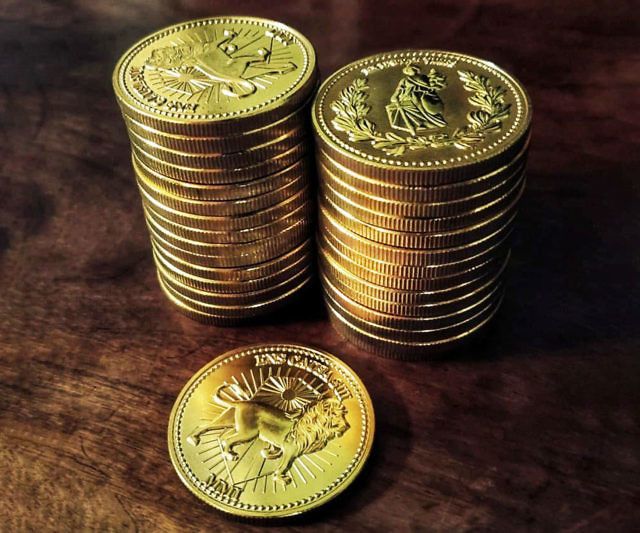Why Gold’s Value Soars in Recessions and Wars: A Safe-Haven Asset

In a world rattled by economic tremors and geopolitical strife, one asset shines through the chaos: gold. As stock markets waver and currencies falter, the precious metal has surged to record-breaking heights, captivating investors seeking refuge. Its allure is no fleeting trend. Gold’s steadfast value during recessions and wars has cemented its reputation as a safe-haven asset, a beacon of stability when uncertainty reigns. But what fuels this enduring appeal? Why does gold glimmer brightest when times grow dark?
Gold’s Intrinsic Value in Economic Downturns
The answer lies in gold’s unique characteristics. Unlike paper currencies, which governments can print at will, gold’s supply is finite, tethered to the earth’s limited reserves. This scarcity underpins its intrinsic value, making it a hedge against the erosion of wealth. During economic downturns, when confidence in financial systems wanes, investors turn to gold to preserve their capital. The 2008 financial crisis offers a stark example. As banks crumbled and stocks plummeted, gold prices climbed steadily, rising from $869 per ounce in 2008 to over $1,900 by 2011, a surge of more than 100%. This wasn’t a fluke. Historical data shows gold’s resilience across recessions, from the stagflation of the 1970s to the dot-com bust of 2001.
Recessions expose the fragility of traditional investments. Stocks often tumble as corporate profits shrink, and bonds waver amid shifting interest rates. Gold, however, operates on a different wavelength. Its price tends to move independently of stock markets, a trait known as low correlation. This makes it a powerful tool for diversification, cushioning portfolios against volatility. When the U.S. economy contracted in 2020 amid the COVID-19 pandemic, the S&P 500 took a nosedive, yet gold soared to an all-time high of $2,067 per ounce. Investors didn’t just seek safety—they sought certainty, and gold delivered.
War’s Impact on Gold’s Appeal
War, too, amplifies gold’s appeal. Geopolitical conflicts breed fear, disrupting trade and shaking investor confidence. When Russia’s invasion of Ukraine sent shockwaves through global markets in 2022, gold prices spiked, reflecting heightened demand. Similarly, the 2023 outbreak of conflict between Israel and Hamas pushed gold to $2,000 per ounce, a level not seen in months. These surges aren’t mere coincidence. Wars often lead to increased government spending and currency devaluation, conditions that erode trust in fiat money. Gold, untethered to any single nation’s economy, becomes a universal store of value, a currency without borders.
Consider the mechanics of a war-driven market. Conflict often triggers inflation as governments borrow heavily to fund military efforts. This was evident during the Vietnam War, when U.S. deficit spending fueled price increases, propelling gold from $35 per ounce in the early 1960s to $178 by 1974. Inflation erodes the purchasing power of cash, but gold holds firm. Its physical nature—no one can “print” more gold—ensures its scarcity, making it a bulwark against rising prices. In times of crisis, central banks themselves lean on gold, bolstering reserves to stabilize their currencies. Since 2010, nations like China and Russia have steadily increased their gold holdings, signaling distrust in dollar-dominated systems.
The Psychology and History of Gold

Gold’s performance isn’t just about economics; it’s psychological. Fear drives markets as much as data does. When recession looms or missiles fly, investors act on instinct, seeking assets that have stood the test of time. Gold’s 5,000-year history as a store of value—used by ancient civilizations from Egypt to Rome—lends it unmatched credibility. It’s not just a metal; it’s a symbol of endurance. This sentiment was clear during the Brexit vote in 2016, when uncertainty over Britain’s exit from the EU sent gold prices soaring as investors braced for upheaval.
Yet gold’s rise isn’t automatic. Its price can dip temporarily if central banks raise interest rates aggressively, as seen in the early 1980s under Federal Reserve Chairman Paul Volcker. Higher rates make yield-bearing assets like bonds more attractive, increasing the “opportunity cost” of holding gold, which pays no interest. But these moments are often short-lived. When rates lag behind inflation—creating negative real interest rates—gold regains its luster. During the 1970s, with inflation outpacing interest rates, gold’s value skyrocketed, rewarding those who held firm.
Global Demand and Central Bank Strategies
Another factor bolstering gold’s value is its global demand. Beyond investors, industries like jewelry and technology rely on gold, particularly in markets like India and China, where cultural affinity for the metal drives consistent purchases. Even during recessions, this demand provides a floor for prices. In 2009, as the world reeled from the Great Recession, India’s gold imports remained robust, helping stabilize global markets. This universal appeal ensures gold’s liquidity, allowing it to be converted to cash almost anywhere, unlike stocks or real estate, which can freeze in a downturn.
Gold’s role extends beyond individual investors. Central banks, wary of overreliance on the U.S. dollar, have increasingly turned to gold to diversify reserves. Since the 2008 crisis, global gold purchases by central banks have risen sharply, with 1,136 tons bought in 2022 alone, according to the World Gold Council. This trend reflects a broader shift: nations seeking autonomy in an interconnected world view gold as a hedge against systemic risks, from trade wars to sanctions.
Navigating Gold’s Volatility
But gold isn’t infallible. Its price can be volatile in the short term, swayed by market sentiment or speculative trading. During the mild recession of 1990, gold’s gains were modest, rising just 0.1% as the downturn proved less severe than feared. Investors must weigh timing carefully, as buying at a peak can lead to losses if prices correct. Still, gold’s long-term track record speaks for itself. Over the past five decades, it has outperformed stocks in six of eight U.S. recessions, offering returns 37% higher than the S&P 500 on average.
Today, with inflation persisting and conflicts simmering, gold’s ascent shows no signs of slowing. Prices have breached $2,600 per ounce, fueled by fears of economic slowdown and escalating tensions. Experts like James Cordier of Alternative Options predict gold could climb to $3,000 in 2025, driven by investors seeking alternatives to volatile equities. The metal’s ability to weather storms—economic, political, or military—makes it a cornerstone of prudent portfolios.
A Timeless Asset in Turbulent Times
Gold’s story is one of resilience. It thrives not because of fleeting trends but because of its timeless qualities: scarcity, durability, and universal trust. When recessions erode wealth or wars upend order, gold stands as a quiet sentinel, guarding value in a world of flux. For investors, it’s more than an asset—it’s insurance against the unknown, a glittering promise that endures.

